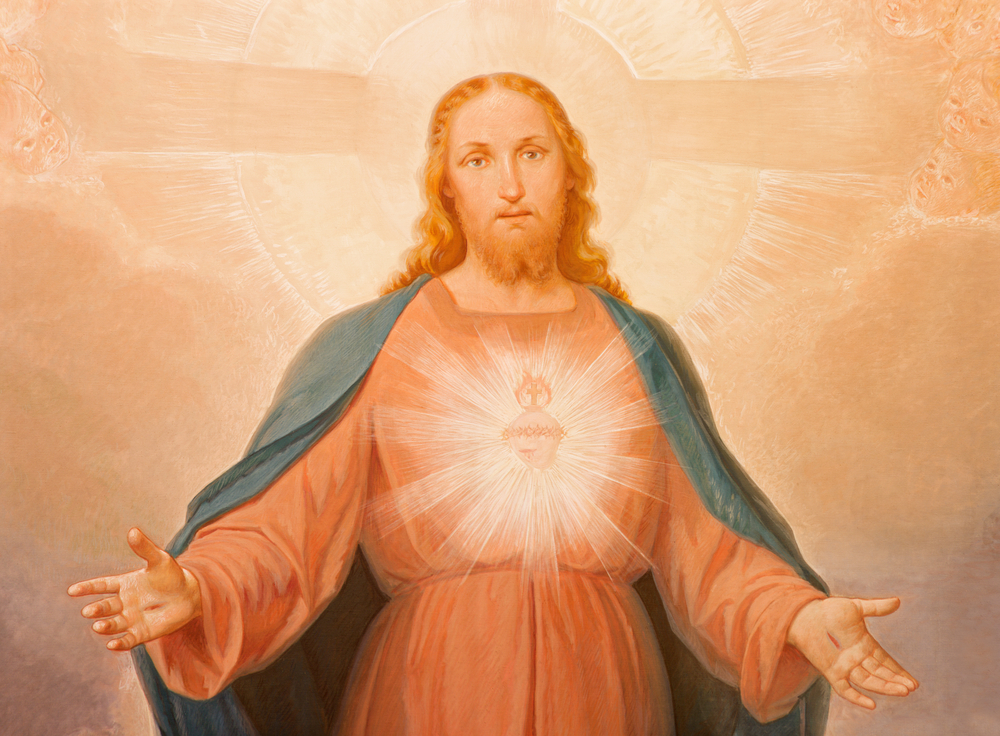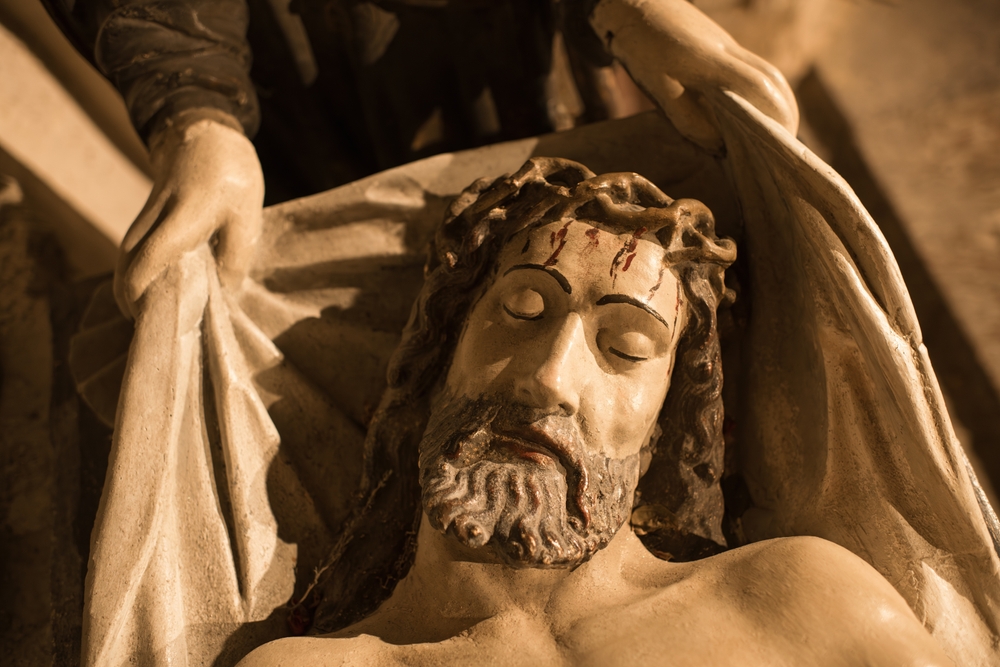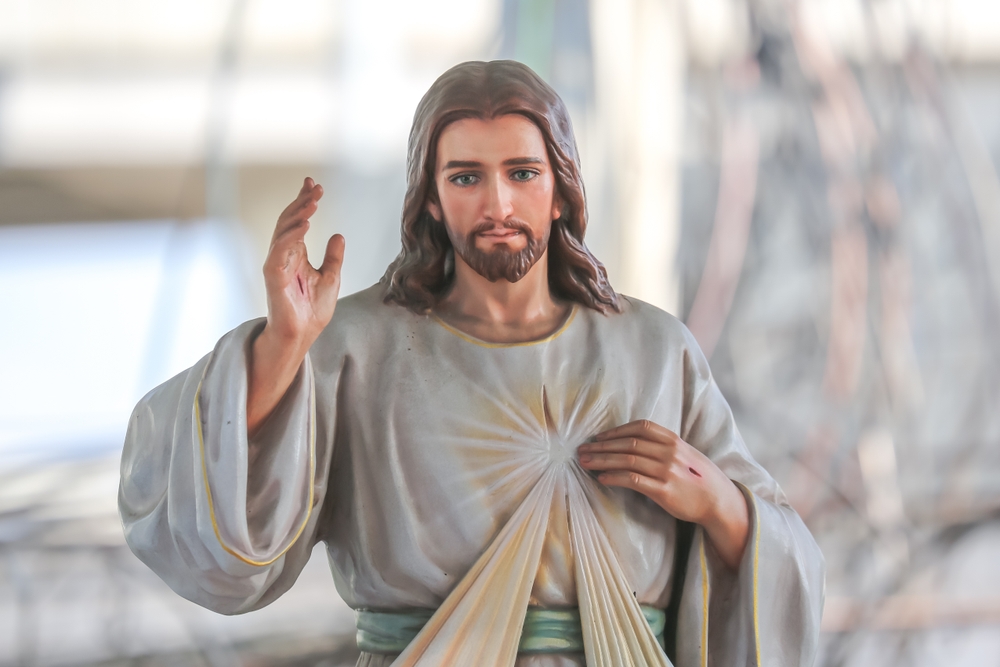Sacred Text Banned From the Bible ‘Reveals’ How Jesus Really Died and It Changes Everything

They say history is written by the victors. But what about scripture?
For nearly two thousand years, one of the most pivotal deaths in human history—the crucifixion of Jesus—has been retold, revered, and recited as sacred truth. We know the scene. We know the story. Or at least, we think we do.
But hidden in the shadows of dusty libraries and beneath the marble domes of cathedrals lies a name the Bible never spoke. A name whispered through apocryphal texts, venerated in legend, and immortalized in stone: Longinus—the soldier who may have held the very spear that pierced the Son of God.
A banned gospel claims to unveil his identity. And while the text was cast aside by early Church leaders, its implications remain bold and unsettling.
Because sometimes, it’s not what’s been said that shakes us.
It’s what’s been left out.
The Soldier Who Pierced the Divine
The Gospels tell us that as Jesus hung on the cross, a Roman soldier pierced His side with a spear, and immediately, blood and water flowed out. (John 19:34) For centuries, this detail has been treated as symbolic—representing both the humanity and divinity of Christ. But who was the soldier behind the act?
The Bible does not give him a name. He is faceless, a function of fate. But in an ancient text excluded from the biblical canon—the Gospel of Nicodemus, also known as the Acts of Pilate—that silence is shattered. The soldier is named: Longinus.
Longinus is not just a figure who stabs and walks away. In this version of the story, he becomes a witness. According to Eastern Orthodox tradition, he is the one who, after seeing the earthquake and the darkened sky, declared, “Truly, this was the Son of God.” (Matthew 27:54) Legends go further. Some say Longinus was nearly blind and that when Jesus’ blood fell on his face, his sight was miraculously restored. The man who helped end Jesus’ earthly life was also the first to see Him clearly.

There is no archaeological or historical proof that Longinus ever existed. He appears nowhere in official Roman records. But that hasn’t stopped his story from shaping sacred tradition. His name was passed down through generations of early Christian communities—not as a villain, but as a convert, a martyr, a man changed by truth too raw to ignore.
In some accounts, Longinus returned to his homeland—possibly in modern-day Turkey—and preached the gospel until Roman authorities silenced him. Stories say he was tortured, his tongue cut out, his teeth pulled. Yet still, he spoke—clearly, miraculously. In the end, he was executed by beheading. A soldier of the empire became a casualty of faith.
Today, his statue stands inside St. Peter’s Basilica in Vatican City, towering beneath the great dome. The Church may not have canonized the text that named him, but it sculpted his image into the heart of its holiest place. Maybe that tells us something deeper.
Because if Longinus did exist—or even if he didn’t—his story speaks to something eternal: the possibility of transformation. That even those who’ve committed violence can awaken to grace. That truth doesn’t always come from those who speak the loudest, but sometimes from those who’ve stood closest to the pain.
The Gospel That Didn’t Make the Cut

The Gospel of Nicodemus, also called the Acts of Pilate, is one such story. Though it claims to chronicle Jesus’ trial, crucifixion, and resurrection, it was never welcomed into the Bible’s official canon. It lives in the margins, labeled apocryphal. A text that dared to name names, fill in blanks, and step beyond the silence of scripture.
So why was it rejected?
The Gospel of Nicodemus likely emerged in the 4th or 5th century, long after the events it describes. That alone raised red flags for early Church leaders. When the biblical canon was formalized—most notably at the First Council of Nicaea in 325 AD—authority was everything. To be accepted as sacred, a text had to be close to the source. Eyewitnesses, apostles, or their immediate followers were the only voices deemed trustworthy.
This gospel didn’t qualify. It came too late, with a voice too far removed. And perhaps more threateningly, it introduced elements that weren’t in the original narrative—like the naming of Longinus, the centurion who pierced Jesus’ side, or the two criminals crucified alongside Him, Dismas and Gestas. It answered questions the canonical Gospels chose to leave unanswered. It colored outside the theological lines.
There’s also the question of authorship. The text is traditionally attributed to Nicodemus, the Pharisee who appears in the Gospel of John as someone who visited Jesus by night and later helped bury Him. But scholars widely debate whether Nicodemus actually wrote it. More likely, his name was used to lend credibility—common practice in ancient religious literature.
What makes this gospel particularly fascinating is not just what it says, but what it represents: an early Christian community wrestling with the mystery of their faith, filling in the silence with names, faces, and stories. It speaks to a hunger for intimacy with the divine—for a God whose story feels knowable, personal, complete.
And yet, the Church said no.
Was it out of fear? Out of caution? Or out of a need to protect a unified message in a world divided by belief?
Whatever the reason, the Gospel of Nicodemus was exiled from the pages of official scripture. But it wasn’t forgotten. It persisted in the shadows—in Eastern Orthodox traditions, in medieval art, and even in Vatican stone.
And perhaps that’s the deeper point: some truths aren’t lost because they’re false—but because they’re inconvenient. Because they ask uncomfortable questions. Because they refuse to be boxed in by the limits of certainty.
Maybe the gospels that didn’t make the cut are the ones we need to hear most—not as replacements for faith, but as reminders that faith, at its best, is never afraid of deeper questions.
Longinus: Legend, Martyr, and the Power of Transformation

In every great story, there’s a character whose role seems small—until you realize they carry the weight of a deeper message. In the story of the crucifixion, Longinus is that figure.
He appears in no official scripture by name. No verified records, no birth certificate, no tomb to mark his place in history. And yet, in Christian tradition, he endures—not as a villain, but as a witness who was changed.
According to legend, Longinus was a Roman centurion stationed under Pontius Pilate, tasked with overseeing the execution of Christ. His job was simple: maintain order, follow orders, and ensure the condemned were truly dead. It was under this command that he reportedly took his spear—what some later called the Holy Lance—and pierced Jesus’ side.
But that act, meant to confirm death, would instead awaken life.
Stories passed down through generations—particularly in Eastern Orthodox and Catholic tradition—tell of Longinus’ transformation. One version says he was nearly blind, and when the blood and water from Christ’s side splashed his face, his sight was miraculously restored. Others say that in the quake and darkness that followed Jesus’ death, Longinus was overcome with awe and conviction. He uttered the words found in Matthew 27:54: “Truly this was the Son of God.”

This wasn’t just recognition. It was repentance.
Longinus is said to have walked away from his post, renounced the empire that raised him, and devoted his life to spreading the message of the very man he helped crucify. His conversion didn’t come without cost. Tradition holds that he returned to his homeland—possibly Cappadocia in modern-day Turkey—where he preached the gospel until he was arrested and brutally tortured for his faith. His teeth were pulled. His tongue cut out. And yet, he kept speaking. Miraculously, the stories say, his voice remained clear. Eventually, he was executed by beheading.
Today, he is venerated as Saint Longinus, and a statue of him—lance in hand—stands under the dome of St. Peter’s Basilica in the Vatican, a quiet monument to a man who crossed from violence into vision.
Whether or not the man existed, the legend of Longinus tells a truth that transcends fact: that redemption is not reserved for the pure. It’s for the broken, the complicit, the ones who didn’t understand until it was too late.
Hidden Stories, Suppressed Truths: Other Banned Texts and Their Impact

For every gospel that made it into the Bible, there are many more that didn’t. Sacred texts, passed hand to hand in the ancient world, were silenced not because they were irrelevant—but because they didn’t fit the shape of control.
Take the Infancy Gospel of Thomas. It paints a picture of a young Jesus—not as the gentle, obedient boy of Sunday school, but as a wild and unpredictable child. One who performs miracles with the recklessness of youth. One who, in a fit of frustration, withers a playmate who muddied his water. A boy who kills and revives, curses and creates.
It’s a jarring image. But maybe that’s why it matters.
Early bishops called it heretical. Dangerous. It didn’t align with the spotless version of Jesus they wanted to present. And so, it was buried—literally and figuratively. Copies were destroyed. Mentions scrubbed. Only fragments survived, some misfiled for centuries, mistaken for grocery lists or private letters.
And then there’s the Book of Jubilees, which tells of fallen angels, giants who devoured the earth, and a cosmic war that led to the Great Flood—not because of simple human wickedness, but because heaven itself fell. These stories, steeped in myth and supernatural horror, were too wild, too unruly. They were tossed aside, their truths considered too “out there” to be trusted.
But here’s the thing—these texts didn’t vanish. They survived in whispers. In cave walls along the Dead Sea. In footnotes of lost codices. In the minds of those who refused to believe that only one version of the story should be allowed to exist.

And isn’t that the story of humanity?
We push away the complicated. We silence the inconvenient. But the truth? The truth is rarely neat. It lives in the mess. In the rejected. In the forgotten voices that still speak.
These apocryphal texts don’t need to be “believed” in a literal sense to matter. Their power lies in what they reveal about us—our hunger for answers, our discomfort with ambiguity, and our endless need to put mystery into boxes we can hold.
But maybe faith isn’t about boxes. Maybe it’s about standing in the unknown and listening anyway.
Because when we ask why certain stories were banned, we aren’t just digging into dusty archives—we’re confronting our own filters. What parts of our lives, our histories, have we silenced because they didn’t align with the image we wanted to protect?
And more importantly: What truth might rise from the ashes if we dared to read them again?
What Stories Do We Choose to Believe — And Why?
Stories are more than words on a page. They shape how we see the world, how we see each other, and how we see ourselves. Some stories are passed down like sacred heirlooms. Others are buried, silenced, or rewritten to serve power, preserve certainty, or protect control.
But the truth? The truth isn’t always convenient.
It’s not always clean.
And it doesn’t always come from official sources.
The story of Longinus—the soldier who pierced the side of Jesus and then, according to legend, pierced his own heart with belief—isn’t in your Bible. But it’s in cathedrals. In ancient texts. In centuries of tradition. Real or not, it resonates because it taps into something universal: the possibility of transformation.
It asks a question we all must face:
Can a person change, even after they’ve caused great harm?
Can the one who pierced the divine still be healed by it?
And if that’s possible for him, is it possible for you?
We all carry spears. We all have moments when we’ve caused hurt, acted blindly, followed orders instead of conscience. But like Longinus, we also have the chance to open our eyes. To be changed by what we once dismissed. To return—not perfect, but awakened.
So maybe the more important question isn’t whether Longinus was real.
Maybe it’s: What parts of your own story have you canonized—and what have you exiled?
We often choose the polished version of our past, the safe version of our faith, the simple version of the truth. But growth doesn’t live in the edited version. It lives in the questions. In the contradictions. In the stories we’re told not to touch.
So go ahead. Touch them.
Read what’s been buried. Listen to what’s been left out. Reclaim the parts of your story that never made the final cut.
Because the moment you do, you stop living someone else’s version of truth—and you start living yours.
Loading...

